






Organizational Alignment: How to Get it Right
As a leader, you know that strategy, resources, and organizational capability matter, but do you know how to ensure they’re aligned?
Organizationally aligned businesses get better results. Read on to learn how organizational alignment can help your company thrive—and how to get it right!
What is Organizational Alignment?
Alignment is “a state of agreement or cooperation among persons or groups with a common cause or viewpoint.” When your organization nails it, all employees—from entry-level to your leadership team—share and act on your vision.
Organizational alignment is the glue to performance excellence. It’s the absolute compatibility between paths, both strategic (goals, objectives, and activities) and cultural (values, practices, and behaviors). Successful strategy implementation can’t happen without execution, which requires an invested organization.
Think about rowing. Specifically, eights racing. In a good eight, everyone is in a relentless rhythm from start to finish.

The Olympics attribute success to:
“technique and teamwork to gain the maximum speed and distance out of every stroke. A rower or team must time their race to perfection, ensuring they have enough energy left for a fighting finish…the coxswain plays an important role, steering the boat and looking out for the tactics of rival boats while also giving instructions to his or her crew in order to be ready for the final spurt to the line.”
Each team member knows their role and that they can rely on their coaching, training, equipment, and their teammates' technique and commitment throughout the race. Seasoned rowers know how to respond to changing conditions and the team knows their role in the plan to adjust at any moment and get back into alignment as a cohesive unit.
With alignment, you get better performance. When alignment is off, the boat strays off course, wasting time, energy, and resources. This is true for rowing teams and certainly true for your organization.
Organizational Alignment is changing with Hybrid/Remote Teams

Organizational alignment requires communication and leadership. If that’s done well then employees don’t need to be in an office together from 9-to-5, Monday to Friday, to maintain that alignment. If people understand their organization's vision and how their work meaningfully contributes to it, they’re naturally inclined to be active participants.
People want to be a part of something bigger than themselves. If an organization shares its vision broadly, and managers distill down to individual contributor level how their actions contribute to that vision, employees’ location shouldn't matter. But without a renewed organizational alignment model, it could.
You may need to adapt your business model and strategy and in some cases revisit your department structure and management teams to smoothly sail into a post-pandemic working environment.
Remote controlling

The evolving remote working world is challenging. Somewhere in the corporate ethos of the 9-to-5 world came the notion that you must be physically seen in person to be heard (and gain the necessary “brownie points” to climb the ladder—see proximity bias) and that there’s a greater separation than the physical one.
As someone who has built a thriving company in a 100 percent remote working environment for the past 12 years, Sarah Bundy, founder and CEO of All Inclusive Marketing Inc., can attest to its challenges and possibilities:
“It takes a different approach to managing people, processes, and systems, however, the tools and talent are there to make it happen. The keys to success in a remote world are actually quite simple: have a great culture of collaboration and teamwork, be open and transparent with your team, hire people who care about doing great work and are value-aligned, keep your team engaged, and provide the tools and systems to make it work.”
The need for great management
Excellent leadership and management are essential for employees to be connected to an organization in remote and hybrid times. Communication for connection is key and managers who are empathetic and understanding—as well as solid communicators—will be the anchors for future success.
Microsoft CEO Satya Nadella recently spoke about the importance of managers during this transition period (a reference to the transition back to the office), suggesting that good managers with coaching mindsets will be key to the new way of working. “If [there was] any time great management was at a premium, it was last year and a half,” he said. “Leaders needed to step up to create and keep the continuity of the connection.”
The need for great management couldn’t ring any truer when it comes to supporting a positive mental health culture. With accolades for growth, culture, and excellence over the past decade, Sarah Bundy shares that, “being remote can sometimes cause isolation or loneliness, so it's important to be proactive about combating this by engaging your team regularly. Implementing regular check-ins, weekly 1:1s, status updates, and engagement pulses are all ways to know what's going on with your team.”
The Typical Organizational Alignment Model

Understanding how aligned your organization is will determine future success. Typical organizational models as laid out clearly in ‘What is organizational Alignment? How to Determine Which Method is Best for Your Business’ are built on a traditional foundation of the corporate 9-to-5 model.
These models have served the office world well but there hasn’t been a shakeup like COVID-19 since the industrial revolution. Traditional organizational alignment models were designed to withstand a little turbulence, unlike the seismic shift the pandemic has thrust upon the corporate world.
The Adecco Group shares insights into our changing landscape in ‘Resetting Normal: Defining the new era of work’, laying out a clear need to reset normal.
“Arguably, the COVID-19 pandemic has changed the world of work more radically than any other single event in our working lifetime. Defining how we use this opportunity to reset and transform our workplaces is now in the hands of all labour market participants. The decisions employers make today will influence their status as an employer of choice for many years to come. The war for talent will be won and lost on the battlegrounds of flexibility, skills investment, leadership and trust. The organizations that are able to “reset normal” on these four dimensions will not only secure the best talent, but will also be the most effective in managing their human capital to create sustainable success for their organizations, for the individuals they employ, and for society at large.”
According to LinkedIn, which surveyed more than 500 C-level executives from the US and UK organizations, more than 71 percent of leaders have felt pressure to change working models and adapt workplace policies to allow for greater flexibility. This will come as no surprise, as conversations around hybrid and remote working remain top of the agenda for many companies—and LinkedIn also found that 87 percent of employees would prefer to stay remote at least half of the time.
So now what? The more people are in alignment with themselves, follow their own rhythms, and live their own values, the more likely they are to show up and align meaningfully to your organization.
Adecco Group also reports 50 percent of respondents say their work-life balance has improved as a result of the pandemic. And individual autonomy over work schedules tripled from only 7 percent completely setting their own schedule before the pandemic, rising to 22 percent during.
Employees are keen to retain this autonomy in the future, with three quarters (75 percent) saying it is important to maintain flexibility over their working schedules. It’s worth noting that a side benefit for employers is longer employee hours worked because of the inability to “shut off” at home.
Past structures need to allow for flexibility. As a leader, you’ll need to consider the shifts that need to be made in working styles, communication rhythm, and team organization to nail both team and organizational alignment and in turn future success of your company.
The Future is Hybrid

Flexibility is the new currency in the workplace between employees and employers. After a tried and tested period of uncertainty and relentless change, the ability to be nimble, agile, and resilient in our future world is more than essential—it’s expected. Employees expect and seek greater flexibility with their workday and week structures to allow for more work-life balance.
The result is a more balanced, happier employee who can focus on the needs of the business versus hours worked. Adecco Group reported 65 percent of non-managers, 72 percent management, and 76 percent executive/C-level would agree.
“Within this scenario, key performance indicators related to output and impact would be the main metric by which a knowledge-economy employee is measured, as opposed to how long they have worked.
Employees would have flexibility in framing their hours and working style, so long as they complete the tasks they are contracted to do and deliver the results expected of them. This would be a significant departure from what was once the norm for many businesses, where “time at desk” was considered important in assessing whether an individual employee was a productive and contributing team member.
For the model to be a success, the high levels of trust that have been established between employees and employers during the pandemic must continue. In fact, over three-quarters (78 percent) of employees say that feeling trusted to get the job done will be important after the pandemic.”
Sarah Bundy echoes this—from her tried and tested experience, “teams appreciate the flexible working hours that remote environments provide, the cost and time savings on not needing to communicate every day, and the casual work environment that allows them to do their best work from wherever they work best.”
The ultimate goal of providing flexibility and instilling high levels of trust is to impact the well-being of employees. With this, everyone wins.
Accelerate Organizational Alignment with Technology

With the pandemic's abrupt impact, many of us have been forced into an accelerated uptake of digitalization, presenting an opportunity to reset, re-skill, and up-skill for the benefit of organizational alignment. With this hungry appetite to use technology for connection, it’s a pivotal time to build a foundation of organizational alignment within your digital tools.
Does your organization need to adapt its model for a sustainable working future and to thrive in a “return to work” world? ThoughtExchange can be a trusted tool to help tap into your best assets to inform your post-pandemic business strategy. Fuel your strategic path to support your organization's cultural path, inspiring trust and improving your business performance.
Communication tools such as Slack, project management tools such as Teamwork, CRM/automation/operations tools such as Salesforce, and reporting tools to understand progress and results could all be beneficial in helping you with connection and in turn alignment. There are many digital tools available for remote data analysis, document sharing and storing, security, sales and marketing. These can often connect with each other to create more efficiencies than what you might find in a more traditional non-remote model.
And remember to stay nimble and keep evaluating your approach as time goes on.
Contact us to see how ThoughtExchange can help your organization achieve organizational alignment.



